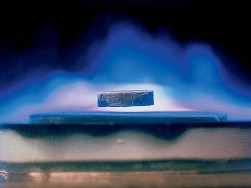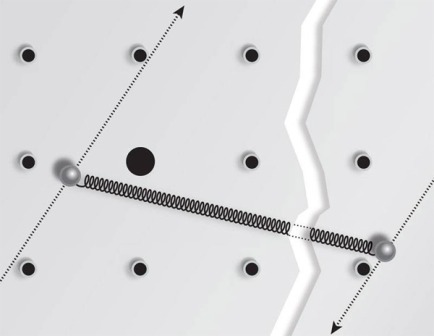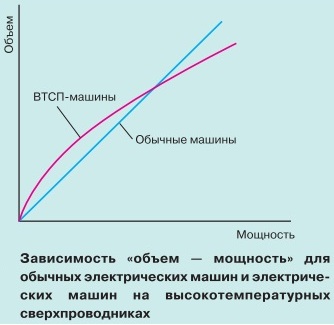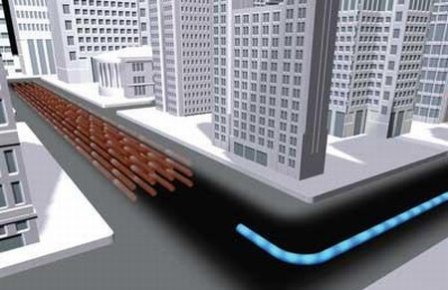Categories: Featured Articles » Interesting Facts
Number of views: 7366
Comments on the article: 0
High temperature superconductivity
 Initially, superconductors had a very limited application, since their operating temperature should not exceed 20K (-253 ° C). For example, the temperature of liquid helium at 4.2 K (-268.8 ° C) is well suited for the superconductor to work, but it takes a lot of energy to cool and maintain such a low temperature, which is technically very problematic.
Initially, superconductors had a very limited application, since their operating temperature should not exceed 20K (-253 ° C). For example, the temperature of liquid helium at 4.2 K (-268.8 ° C) is well suited for the superconductor to work, but it takes a lot of energy to cool and maintain such a low temperature, which is technically very problematic.
The high-temperature superconductors discovered in 1986 by Karl Müller and Georg Bednorets showed a critical temperature much higher, and the temperature of liquid nitrogen at 75K (-198 ° C) for such conductors is quite enough for operation. In addition, nitrogen is much cheaper than helium as a refrigerant.
The discovery in 1987 of a "jump in conductivity to almost zero" at a temperature of 36K (-237 ° C) for compounds of lanthanum, strontium, copper and oxygen (La – Sr – Cu – O) was the beginning. Then, the property of the yttrium, barium, copper, and oxygen (Y – Ba – Cu – O) compounds to exhibit superconducting properties at a temperature of 77.4 K (-195.6 ° C) above the boiling point of liquid nitrogen was first discovered.
In 2003, the ceramic compound Hg — Ba — Ca — Cu — O (F) was discovered, which has a critical temperature of 138 K (-135 ° C) and reaches 166 K (-107 ° C) at a pressure of 400 kbar; and in 2015, a new record was set for hydrogen sulfide (H2S), which became a superconductor at a pressure of 100 GPa, at a temperature not exceeding 203K (-70 ° C).

Superconductivity as a physical phenomenon, first at the microscopic level, was explained in the work of American physicists John Bardin, Leon Cooper and John Shriffer in 1957. Their theory was based on the concept of the so-called Cooper electron pairs, and the theory itself was called the BCS theory, according to the first letters of the names of its authors, and to this day this macroscopic theory of superconductors is dominant.

According to this theory, the electron states of Cooper pairs correlate with opposite spins and momenta. At the same time, the theory used the so-called transformations of Nikolai Bogolyubov, who showed that superconductivity can be considered as a process of superfluidity of an electron gas.
Near the Fermi surface, electrons can be effectively attracted by interacting with each other via phonons, and only those electrons are attracted whose energy differs from the electron energy on the Fermi surface by no more than hVd (here Vd is the Debye frequency), and the rest of the electrons do not interact.
Interacting electrons and combine into Cooper pairs. These pairs possess some properties characteristic of bosons, and bosons can go over into a single quantum state upon cooling. Thus, due to this feature, pairs can move without colliding with either the lattice or other electrons, that is, Cooper pairs move without energy loss.

In practice, high-temperature superconductors provide loss-free power transmission, which makes their introduction and use in the future useful and efficient. Power cables, transformers, electric machines, inductive energy storage with an unlimited shelf life, current limiters, etc. - high-temperature superconductors are applicable everywhere in electrical engineering.
Dimensions will be reduced, losses will be reduced, the efficiency of production, transmission and distribution of electrical energy as a whole will increase. Transformers will have less weight and very low losses, compared with transformers with conventional windings. Superconducting transformers will be environmentally friendly, they will not need to be cooled, and in case of overload, the current will be limited.
Superconducting current limiters are less inertial. With the inclusion of energy storage and superconducting generators in electric networks, their stability will increase. Power supply of megacities will be carried out by means of superconducting underground cables that can conduct up to 5 times more current, and the laying of such cables will significantly save urban areas, since the cables will be more compact compared to those used today.

Calculations show that, for example, building a power line for 1 GW at a voltage of 154 kV, if superconducting cables are used, will cost 38% cheaper than if it were implemented using standard technology. And this is taking into account the design and installation, because the number of threads required is less, respectively, the total number of cables is less, and the inner diameter of the conduits is also less.
It is noteworthy that a significant power can be transmitted through a superconducting cable even at low voltage, reducing electromagnetic pollution, and this is true for densely populated areas, where the laying of high-voltage lines causes concern, both among ecologists and the public.
The introduction of high-temperature superconductors into the field of alternative energy is also promising, where profitability is by no means a secondary factor, and the use of superconductors here will increase the efficiency of new sources. Moreover, for the next 20 years, there is a steady tendency towards their rapid development in the world.
See also at bgv.electricianexp.com
:
